Loading
Madina, a city of great historical and spiritual significance, is home to numerous sacred sites, including the Rawdah of Prophet Muhammad (SAW) and various revered masajids. For those performing Hajj or Umrah, Madina is an essential destination. Known as the foundation of Islamic civilization, Madina holds a special place in the hearts of Muslims worldwide.
The Rawdah of the Prophet (SAW) is located here, making Madina an even more important place of ziyarat. It was in Madina that Prophet Muhammad (SAW) sought refuge during the Hijrah from Makkah, turning it into a sanctuary for Ahl-ul-Bait. As a pivotal center of Islamic culture, Madina continues to attract millions of visitors.
For those planning to visit Madina, well-known YouTuber and blogger Abdul Fareed Malik has prepared a comprehensive guide to help you explore these sacred sites, offering valuable insights into their religious importance.
Nour Baserti is here to make your Ziyarat visits seamless, allowing you to focus on spiritual fulfillment while we handle your transportation needs. Let us guide you on this sacred journey to connect deeply with your faith.
Masjid al-Nabawi, also known as the Prophet’s Mosque, is a revered mosque located in Madina, Saudi Arabia. It holds the final resting place of Prophet Muhammad (PBUH), making it one of the most sacred sites in Islam, second only to Al-Masjid Al-Haram in Makkah.
The mosque was built by Prophet Muhammad (PBUH) himself and has since become an important destination for Muslims from around the world who visit for ziyarat during their pilgrimage or at any time of the year.
The architectural beauty and spiritual atmosphere of Masjid al-Nabawi attract millions of visitors annually. The mosque is not just a place of worship, but a profound symbol of the Prophet's legacy and the heart of Islamic civilization in Madina.
Visiting Masjid al-Nabawi is a deeply spiritual experience, where pilgrims seek peace, blessings, and the opportunity to stand in the presence of the Prophet’s sacred resting place.
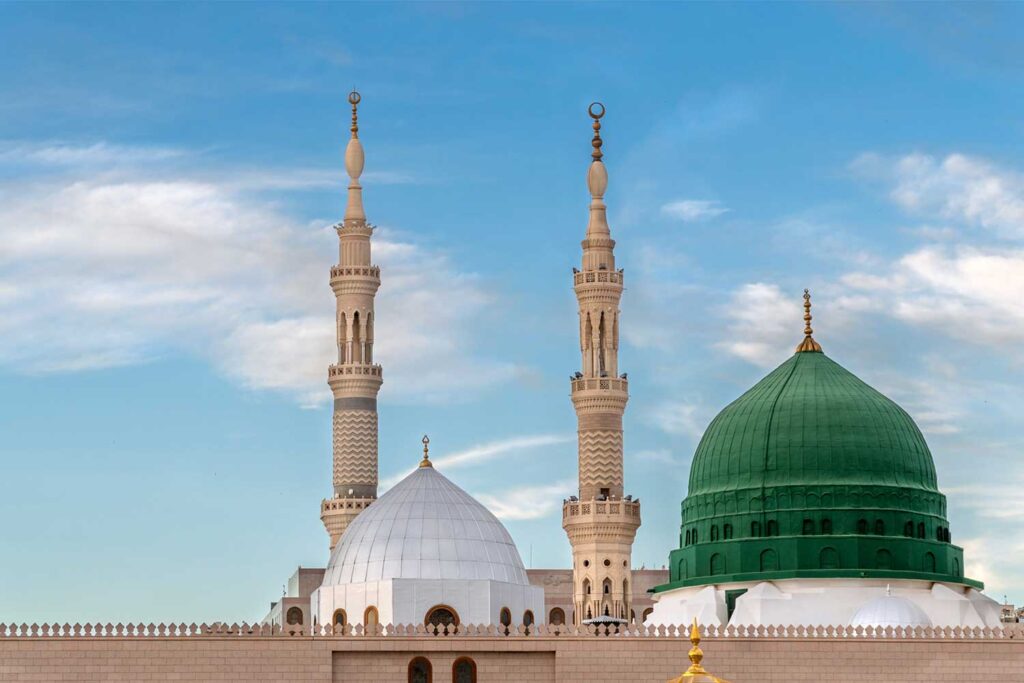
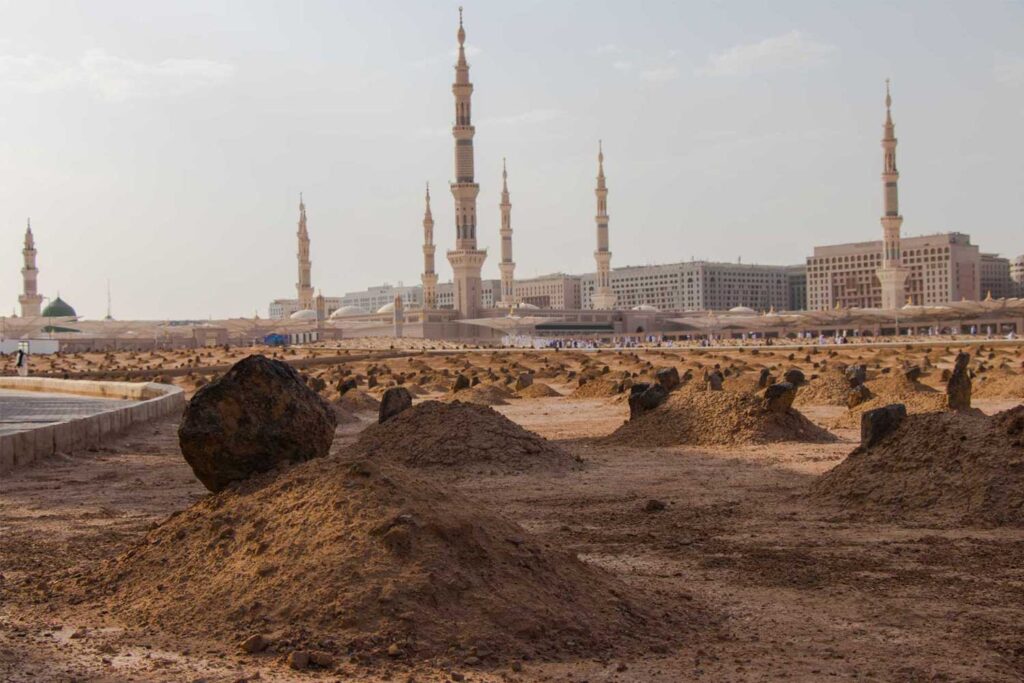
Jannat al-Baqi, also known as Baqi’ al-Gharqad, is one of the most sacred burial grounds in Islam, located in Medina, Saudi Arabia. It holds a special significance as the final resting place for many prominent figures from the early Islamic period, including the companions of Prophet Muhammad (PBUH) and members of his family.
Created by Prophet Muhammad (PBUH), this cemetery has been a site of reverence and reflection for Muslims for centuries. The peaceful grounds of Jannat al-Baqi serve as a reminder of the Islamic faith’s rich history and the sacrifices made by those who laid the foundation of Islam.
Today, millions of Muslims visit Jannat al-Baqi as part of their pilgrimage to Madina, paying their respects and seeking spiritual tranquility. It remains a significant destination for ziyarat, providing a space for prayer and reflection on the lives of the Prophet’s companions and their contributions to Islam.
The Quba Mosque holds immense historical and spiritual significance as the first mosque ever built in the history of Islam. Situated in Madina, Saudi Arabia, it marks a pivotal moment in Islamic history and is one of the most important destinations for ziyarat in the city.
Originally a humble structure constructed with mud and palm leaves, the mosque has undergone several expansions and renovations throughout the centuries. Today, Quba Mosque stands as a grand and modern mosque, continuing to serve as a place of worship and reflection for Muslims from around the world.
Every year, hundreds of thousands of pilgrims visit Quba Mosque as part of their journey to Madina. It remains a symbol of the early days of Islam, reminding Muslims of the foundation of their faith. A visit to this mosque holds great reward, and it is considered one of the most beloved places to visit during pilgrimage.
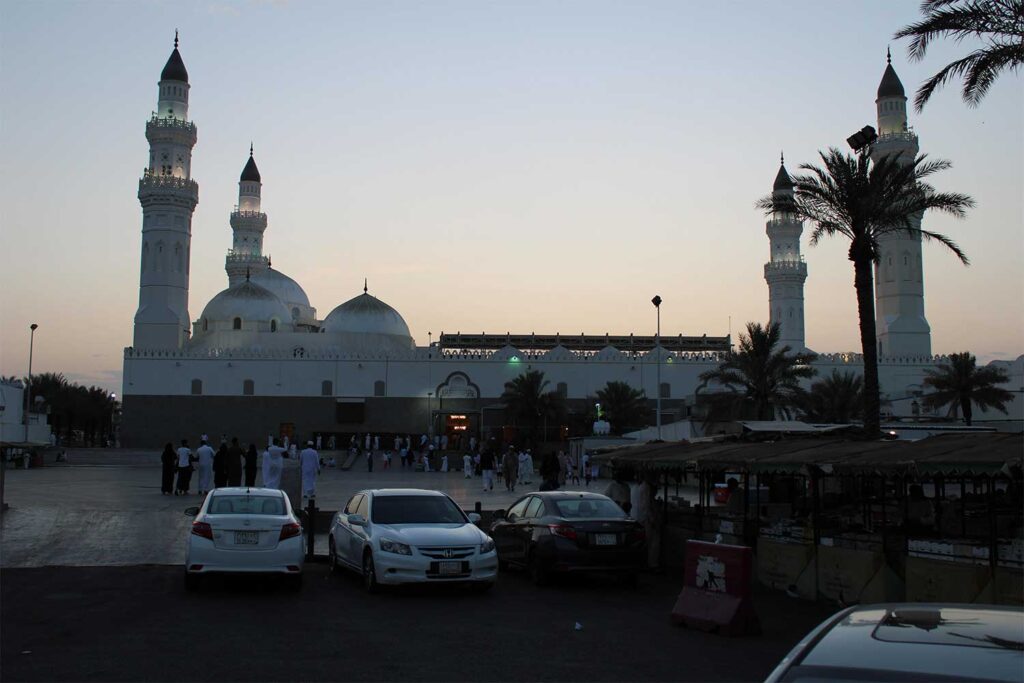
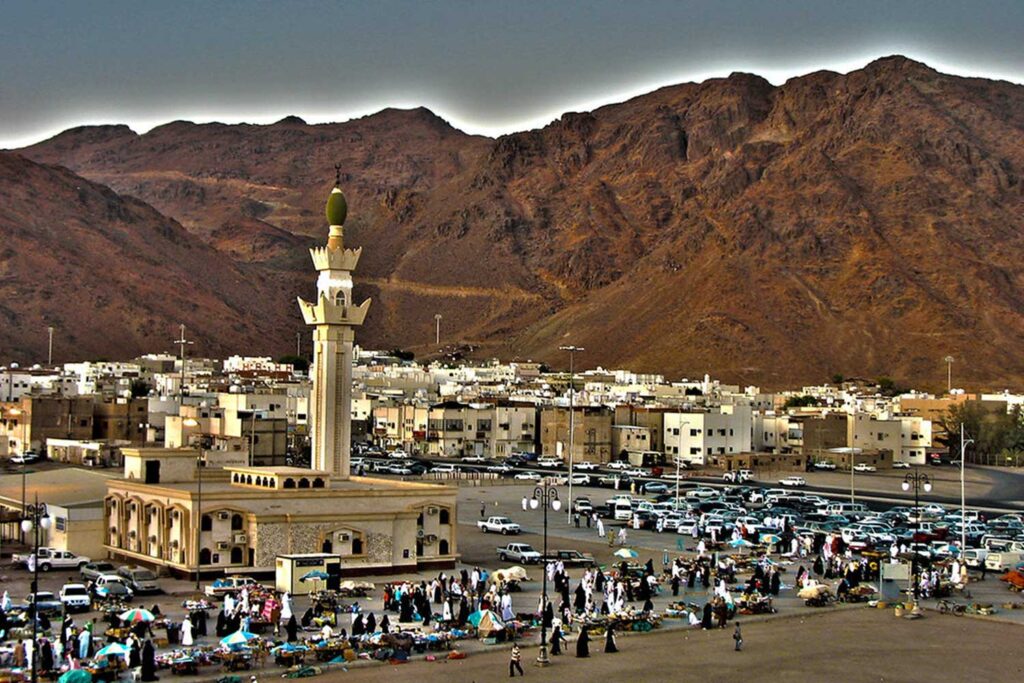
Uhud Mountain, located in the city of Medina, Saudi Arabia, is one of the most significant historical landmarks for Muslims. This mountain is famously associated with the Battle of Uhud, a pivotal moment in early Islamic history where the Muslims faced defeat.
Today, Uhud Mountain is a popular destination for ziyarat in Madina, where Muslims visit to pay respects to the martyrs and fallen soldiers of Islam who sacrificed their lives during the battle. The mountain and its surrounding area are home to several monuments and graves, marking the spot where many brave companions of the Prophet Muhammad (PBUH) are laid to rest.
A visit to Uhud Mountain serves as a reminder of the sacrifices made for the preservation and growth of Islam. It holds deep spiritual significance for Muslims, providing an opportunity for reflection, remembrance, and prayer.
Masjid al-Qiblatain, located in Madina, Saudi Arabia, holds immense historical significance in Islam. This mosque is renowned for being the site where the first congregational salah was prayed after the change of the Qibla, the direction of prayer, from Jerusalem to Makkah.
The mosque is unique in its structure, as it is the only mosque in the world that has two qibla walls, one facing Jerusalem and the other facing Makkah. This remarkable feature serves as a testament to the pivotal moment in Islamic history when the direction of prayer was changed.
As one of the most visited sites in Madina, Masjid al-Qiblatain remains a popular destination for Muslims who come for ziyarat in Madina. The mosque offers an opportunity for reflection and remembrance of the historical significance of this location during the time of Prophet Muhammad (PBUH).
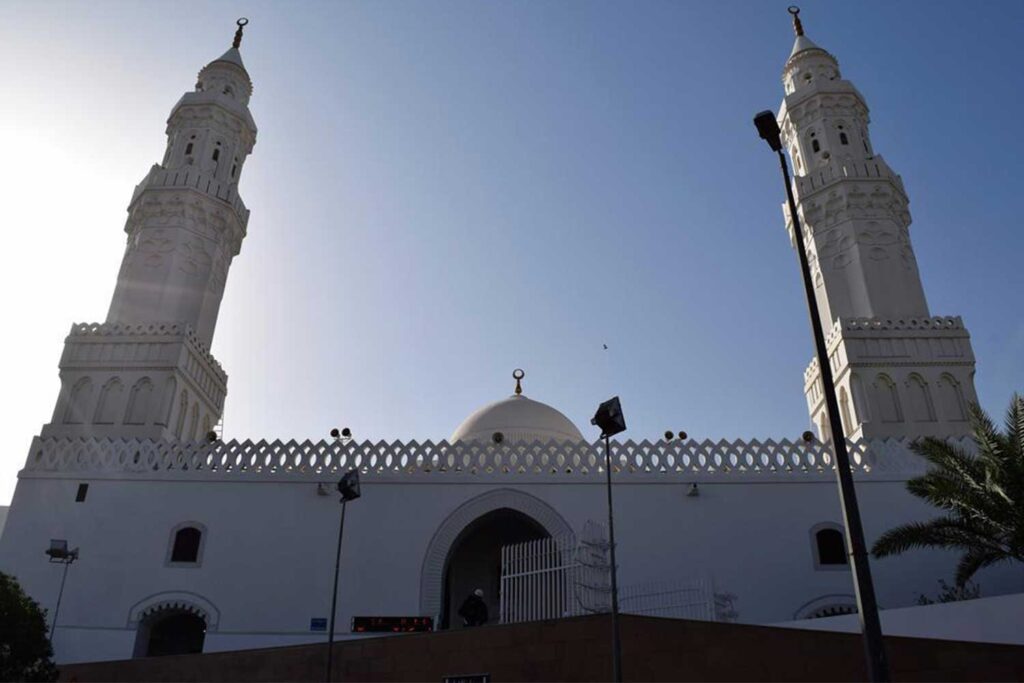
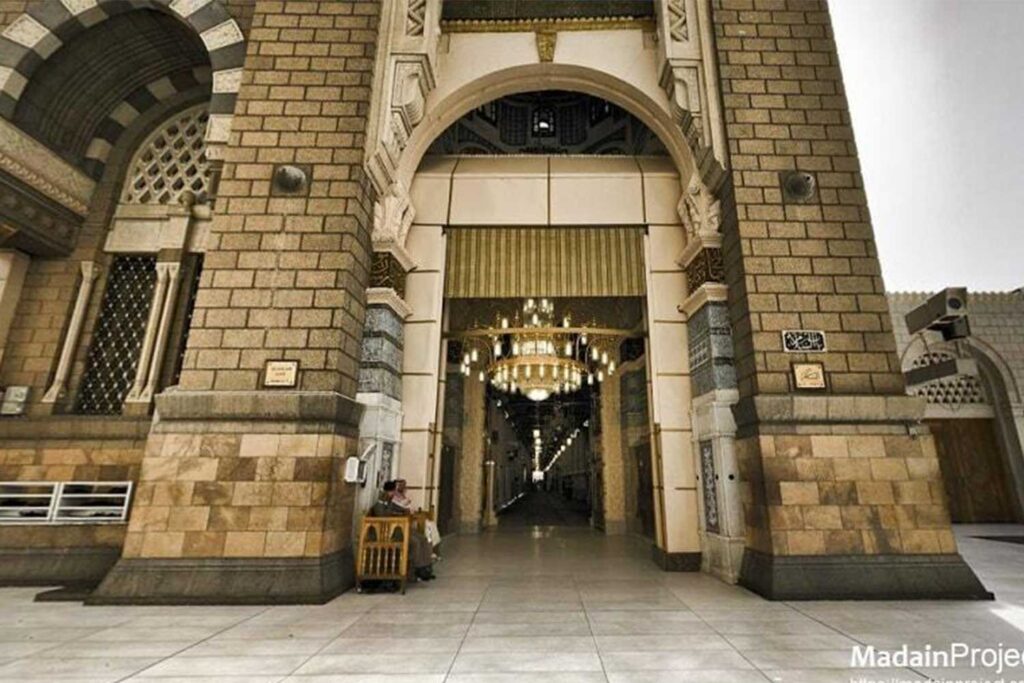
Baab-As-Salaam, meaning "Peace Gate" in English, is one of the prominent gates of Makkah's Al-Masjid al-Haram, situated closer to Mount Marwah. This historic gate is an important entry point for pilgrims visiting the mosque, particularly for those performing the Arrival Tawaf.
Traditionally, it has been customary for first-time visitors to enter through this gate. It holds great significance in Islamic history, as it was the site where the first Friday prayers (Jum’ah) were held. Prophet Muhammad (PBUH) is believed to have led the first Jum'ah prayers here after the migration from Makkah to Madinah.
Over the centuries, Baab-As-Salaam has undergone several renovations, including notable restorations by Sultan Suleiman Khan in 931 Hijri and again in the 2000s. Today, it remains a revered site for Muslims who visit Makkah for ziyarat and to experience its historical and spiritual significance.
Masjid Al-Ghamamah is a small yet significant mosque located in Medina, Saudi Arabia. While it may not be one of the major landmarks of the city, it holds an important place in the hearts of Muslims who visit for ziyarat and seek blessings from this historic site.
The mosque is known for its connection to an important event in Islamic history. It was the place where Prophet Muhammad (PBUH) offered prayers, and it is considered a site of great spiritual significance. While it may not be as large as other mosques in the region, Masjid Al-Ghamamah serves as a peaceful spot for reflection and devotion.
Visitors to the mosque during ziyarat in Madina should ensure they follow proper etiquette, including wearing modest attire, as prescribed by Islamic customs. It is also important to observe prayer times and to respect the cultural and religious norms by refraining from eating, drinking, or smoking inside the mosque.

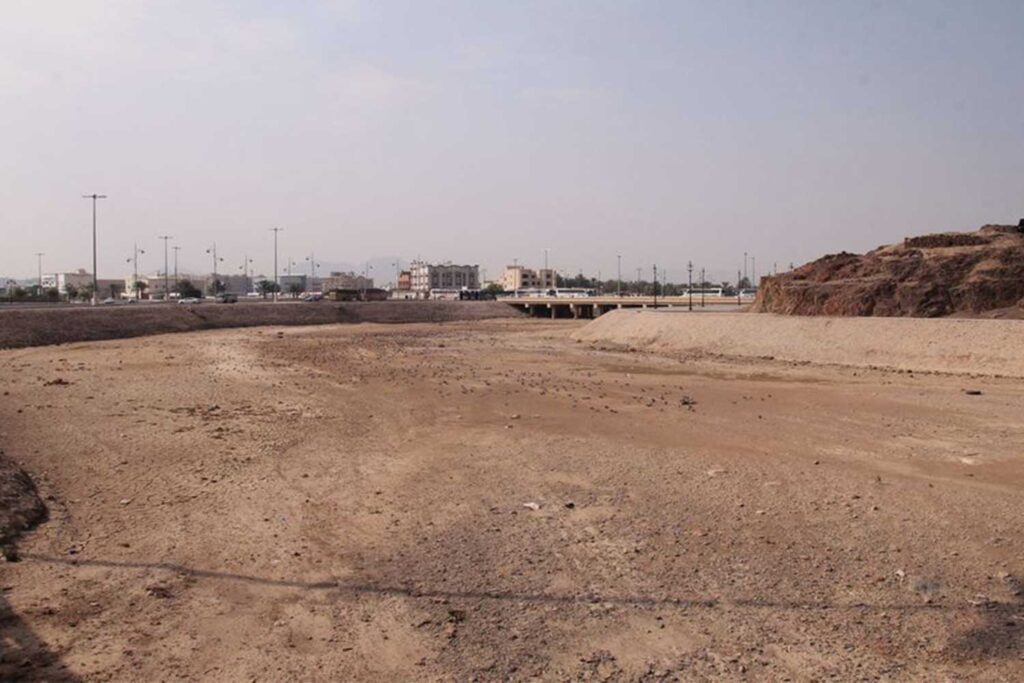
The Battlefield of the Trench (Khandaq), also known as Maidan-e-Khandaq, holds great historical and spiritual significance in Islamic history. This site in Madina marks the location where the famous Battle of the Trench took place in 627 CE, a defining moment in the early days of Islam.
The battle was fought between the Muslims of Madina, led by Prophet Muhammad (PBUH), and the combined forces of the Quraysh tribe and their allies. The Muslims, despite being heavily outnumbered, defended their city through a strategic trench, leading to a decisive victory. This victory marked a turning point in the struggle between Islam and its adversaries, solidifying the position of the Muslim community in the Arabian Peninsula.
The Battle of the Trench serves as a profound lesson in overcoming challenges with faith, unity, and perseverance. It stands as a reminder of the strength and resolve of the early Muslims in the face of adversity and their unwavering commitment to the cause of Islam.